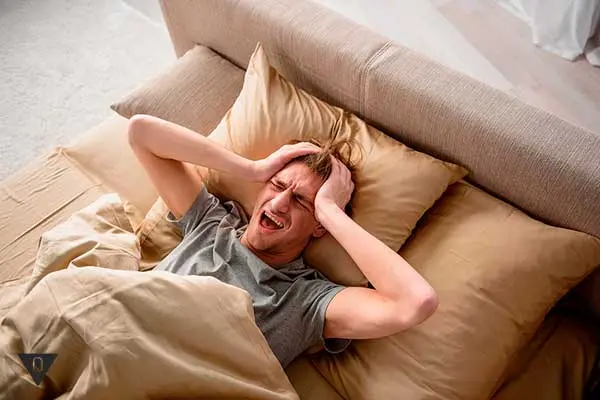Contents
Hello dear blog readers. Today we will touch on the topic of mood swings, which is not related to life situations, but depends on the time of year. Seasonal affective disorder, autumn depression, spring blues, and many other variants of the name speak of the relevance of this issue. In the article I will tell you why it is important to be able to determine the symptoms of this disorder, and also what the lack of timely correction can threaten.
Seasonal Disorder: A Diagnosis or Just a Bad Mood?
Seasonal change in the affective sphere in psychology refers to the psychopathological states of depressive and bipolar disorders. However, seasonal changes in mentality and mood are normal for most people. They represent the need for hospital treatment only in extreme cases.
So, for all warm-blooded mammals, the following biological changes in the autumn-winter period are normal:
- decreased motor activity;
- slowing down metabolic processes in the body;
- increased need for sleep.

Against the background of biological changes, lack of sunlight, and by the end of winter and vitamins, most body functions are disrupted. The mood directly depends on the biological processes that trigger the synthesis of hormones of joy. In addition, fatigue increases, which is why there is simply no strength left to rejoice. Evolutionarily, during the dark period of the year, all biological organisms switch to energy saving mode.
You can read more about the biological rhythms of the body here.
Modern society sets other standards and standards in which a person must be active always and regardless of the conditions of the outside world. Ideally, if at the same time he will have a good mood around the clock. The distorted information of movies and social networks hides periods of depression, creating the illusion that everyone is happy, but only you are sad.
Turn on the logic, and you will find that you yourself post only beautiful photos. Share in most cases fun events or your successes.
Seasonal mood swings are quite normal. However, a bad mood can be taken by the person himself as a disorder, if there is no experience of enjoying the quiet course of life and accepting the fact of the imperfection of the world.
You can talk about the disease if the process becomes chronic and very severe manifestations. Symptoms of an affective disorder associated with a change in the weather, we will consider further.
Criteria for defining a disorder
Diagnosis of seasonal affective disorder is carried out by a psychiatrist, psychotherapist or general practitioner after clarifying studies. The importance of diagnostics by specialists is due to the fact that the disease also has a latent form of the course, in which the symptoms can be smoothed out. In this case, neither the articles nor the ICD10 guide will help you independently determine the presence of violations.
Symptoms of the disorder:
- the frequency of episodes of mood changes in the same period of the year;
- the presence of remissions in a depressive disorder, as well as phases of mania and depression in a bipolar manifestation;
- duration of 2 years or more, excluding periods of depression outside the crisis season;
- the prevalence of depressive conditions in everyday life in the long term.
During the period of remission, a person leads a normal life and does not experience problems with mood, while at the onset of a certain time of the year, the syndrome manifests itself as follows:

- increase in the required duration of sleep, up to almost round-the-clock stay in bed;
- feeling unwell in the morning, which is accompanied by difficulty waking up, weakness, nausea, dizziness;
- overeating and increasing the amount of consumption of sugar and carbohydrates — occurs due to the need to increase the level of missing energy, as well as seize a bad mood;
- difficulty concentrating, inability to complete the work begun;
- decrease in social activity, manifestation of indifference to family, friends;
- a decrease in sexual desire and the need for creative self-expression.
An important point is the difference between disorders in winter and summer. Changes in mood during the daytime are less common and have slightly different manifestations. In summer, a person has a feeling of anxiety instead of depression and apathy, insomnia or interrupted sleep is characteristic. The individual may appear agitated, irritable, impatient — all this is due to internal restlessness. Appetite is practically absent, against the background of which there is a sharp weight loss.
Causes
The exact cause of the decrease in mood has not been identified. At the moment, there is an assumption that the biorhythms of all living beings directly depend on the season, day, lunar cycles and weather conditions. Also, scientists have identified facts that directly affect the level of mood:
- decrease in the rate of chemical processes in the body;
- slowing down the production of serotonin or its pathological distribution (hereditary characteristic, transmitted genetically);
- shift of circadian rhythms in any direction from natural ones;
- lack of sunlight;
- poor eye sensitivity to light, due to genetic predispositions, which ultimately distort the way the body perceives the environment.
Treatment

Depending on the causes, appropriate therapy is prescribed, most often including a combination of several methods: medications, light therapy and psychotherapy. I will tell you in detail about each of them.
Medicines
Antidepressants are the most popular in relieving the symptoms of seasonal mood disorder. Only a psychiatrist has the right to prescribe such treatment, and the dosage and drugs are selected individually for each patient.
In order for the first improvements to appear, it is necessary to drink a course of tablets for at least 2 weeks. However, it will take about 2 months for the result to be fixed.
The duration of treatment is due to the very scheme of taking the drug. Initially, the doctor prescribes medicines in minimal dosages, and then gradually increases them. In this case, the timing and doses will be individual for each patient, depending on the occurrence of side effects, as well as combinations with other methods of therapy.
Possible side effects of antidepressants:
- the occurrence of a feeling of anxiety or increased nervousness;
- nausea, loss of appetite, gastrointestinal upset;
- sleep disturbance and headaches;
- change in sexual activity.
A milder drug effect occurs with the use of melatonin, which is an analogue of sleeping pills and is used as a regulator of the daily rhythms of the body.
Light therapy
Since one of the reasons for the decrease in mood is the lack of sunlight, in such cases, light therapy is indicated for all patients. You can do this yourself to improve your mood, even if you have an autumn blues, and not an affective disorder at all. To do this, it is recommended to spend as much time as possible outdoors during daylight hours.
Among the additional techniques, it is possible to install special bright lamps and a general increase in lighting in the room. In clinics where light therapy rehabilitation is carried out, special light screens are installed. Sessions are assigned to each patient, depending on the rhythms. It looks like sitting in front of a light source from half an hour to 1 hour.
Another development helps to reduce negative feelings from the onset of the morning. Usually these are alarm clocks imitating dawn — instead of a sharp sound, they begin to emit a muffled light, which gradually becomes brighter and brighter. Psychologically, such an awakening is more natural, especially in winter, when many people get up by the light of street lamps.
The organization of the daily routine, as well as physical activity, is along with the improvement of light conditions. This also includes the regulation of nutrition, filling the diet with essential minerals and trace elements.
Psychotherapy

Individuals whose mood depends on the time of year require not only physical and medical effects, but also the help of a psychotherapist. This is logical and natural, because it is the ability and development of skills to regulate one’s emotional state that make it possible to reduce the dosage of drugs or cope without them.
The most effective directions in the treatment of affective disorders are cognitive-behavioral and interpersonal therapy. With the help of the first, a person learns to regulate his behavior, works out new strategies for coping with unpleasant emotions. With a qualitative study of the problem, it is possible to draw up a whole plan that helps to survive the unpleasant season without any special emotional losses.
Interpersonal and family therapy helps to maintain important social bonds under the pressure of depression. Instead, a person can learn to receive support, to understand that he is not alone with such a problem.
In principle, any group form of therapeutic work is good, as it preserves social connections, skills, and inspiring moments.
Conclusion
By the way, I recommend that you read an interesting article about the relationship between blood type and human character.
I hope this article has become useful to you and helped you find answers to your main questions. Subscribe to the blog and follow our updates.
Until next time!









